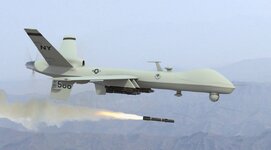Whether you like it or not, hunters are going to be shooing longer distances at game. What I don't like is hunters will talk about taking game at long distance as if it is easy, but rarely talk about the rifles, scopes, and equipment that they use, or how they practice to make sure they take an ethical shot.
I'd like to hear what people are using.
-Rifle
-Caliber
-Scope
-Rest/shooting sticks/ ect
-How you calculate/adjust for drop
-What you use to read the wind and how you adjust for wind
-How you practice
-How much you practice
Because we know people are going to take long shots now at game due to the hunting shows and conversations on forums, it is important for those considering it to know just how difficult it is, and how to prepare for it.
I'd like to hear what people are using.
-Rifle
-Caliber
-Scope
-Rest/shooting sticks/ ect
-How you calculate/adjust for drop
-What you use to read the wind and how you adjust for wind
-How you practice
-How much you practice
Because we know people are going to take long shots now at game due to the hunting shows and conversations on forums, it is important for those considering it to know just how difficult it is, and how to prepare for it.












